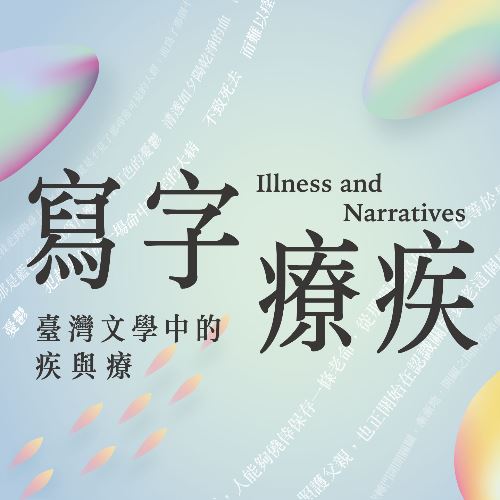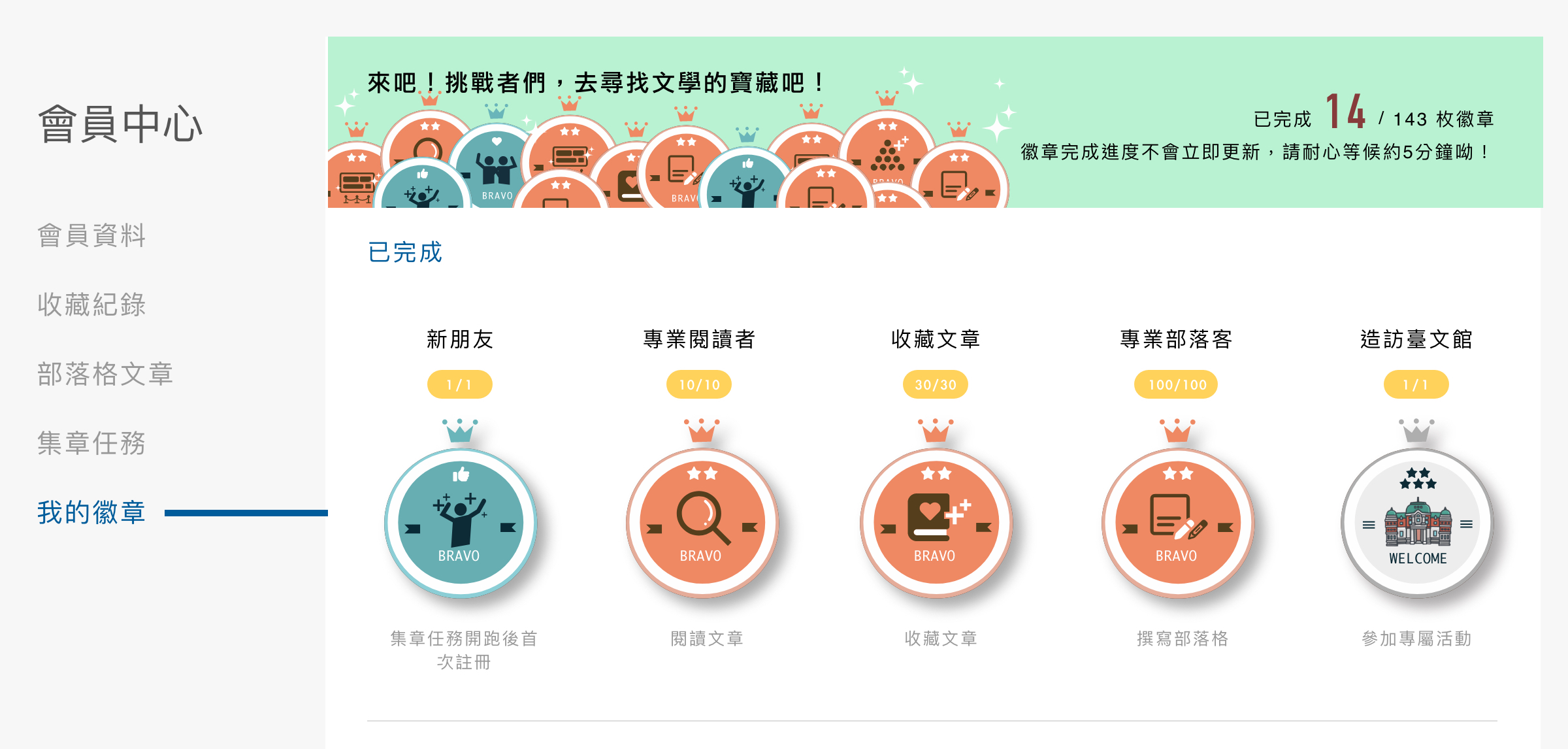►The Impact of Poverty on the Road to Recovery ►Quarantine - Shutting the World out or Me in?
►Communal Treatment – Dispelling Fear ►Stress - A Contagious Ailment?

Contagious diseases are frightening and create distance among people. Amid extreme situations and unknown fears, literature reveals the chaos brought by diseases as well as unspoken discrimination. Patients become silent others, whereas literature serves as a platform for expressing one's voice. Contagious diseases have occurred repeatedly in the history of Taiwan.
Generations of people that once lived on the Island had ways of dealing with diseases. By using traditional prescriptions or holding a variety of rituals, people attempted to treat diseases and quell their fears. As the knowledge about medicine from the West was introduced to Taiwan by missionaries and the Japanese colonial government started implementing modern hygiene measures, writers began to write about the conflicts between folk therapies and modern knowledge.
The Impact of Poverty on the Road to Recovery
During the Japanese colonial era, the Japanese government drastically improved the public health system in Taiwan. However, many civilians were unable to get proper care due to their financial situation. As a result, they continued to suffer from the vicious cycle of poverty and illness.
"Poor people only call for a doctor when they need a death certificate."
The Taiwanese doctor in Yang Kuei's short novel "A Village without Doctors" laments for this reality at the time.
Literature keeps records of the mutual impact of poverty and illness; it also witnesses the tenacity of people. A Tuberculosis patient's lungs are infected with TB bacteria. Before treatment was available, patients could only rely on passive bed rest or high risk surgery. For people at the time, Tuberculosis was like a plague. Writer Chung Li-ho used to be a TB patient; he wrote down his fear and fierce resistance when he was ill.
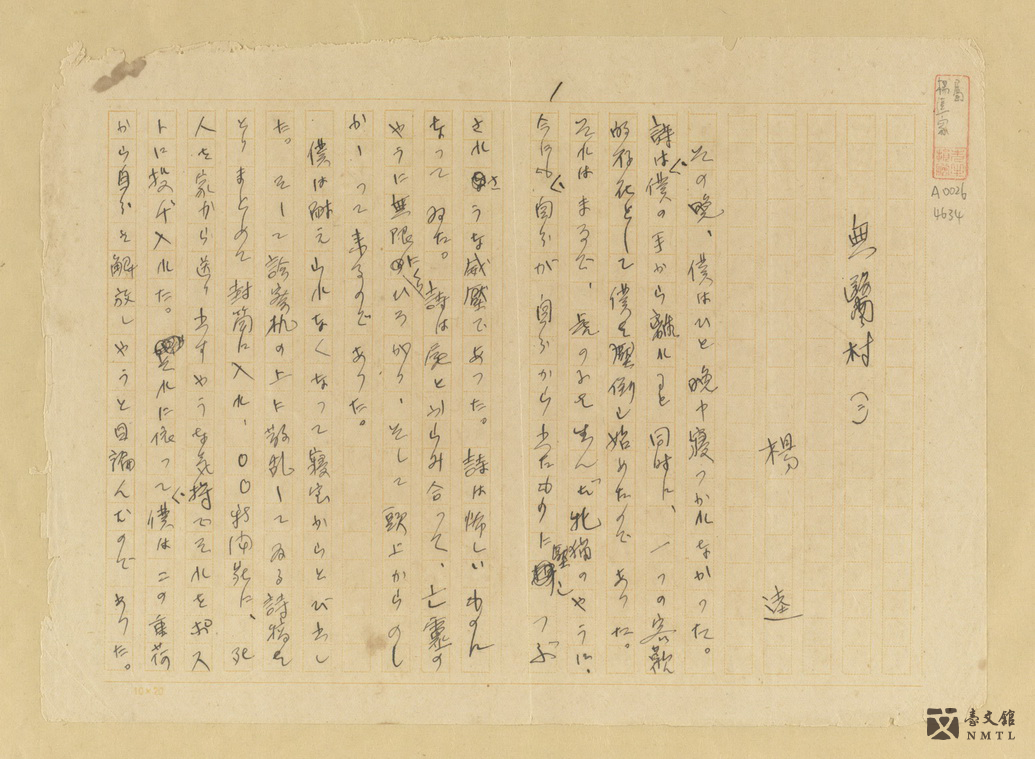
✺ "A Village without Doctors"
"A Village without Doctors," written by Yang Kuei (1906-1985), illustrates a patient who takes herbal medicine and delays medical treatment because of having no money to see a doctor. The doctor comes to visit the patient only to issue a death certificate. This work by Yang Kuei condemns the government's neglect of the general public and the problem of wealth inequality.(Donated by Yang Chien/ Kept in National Museum of Taiwan Literature)
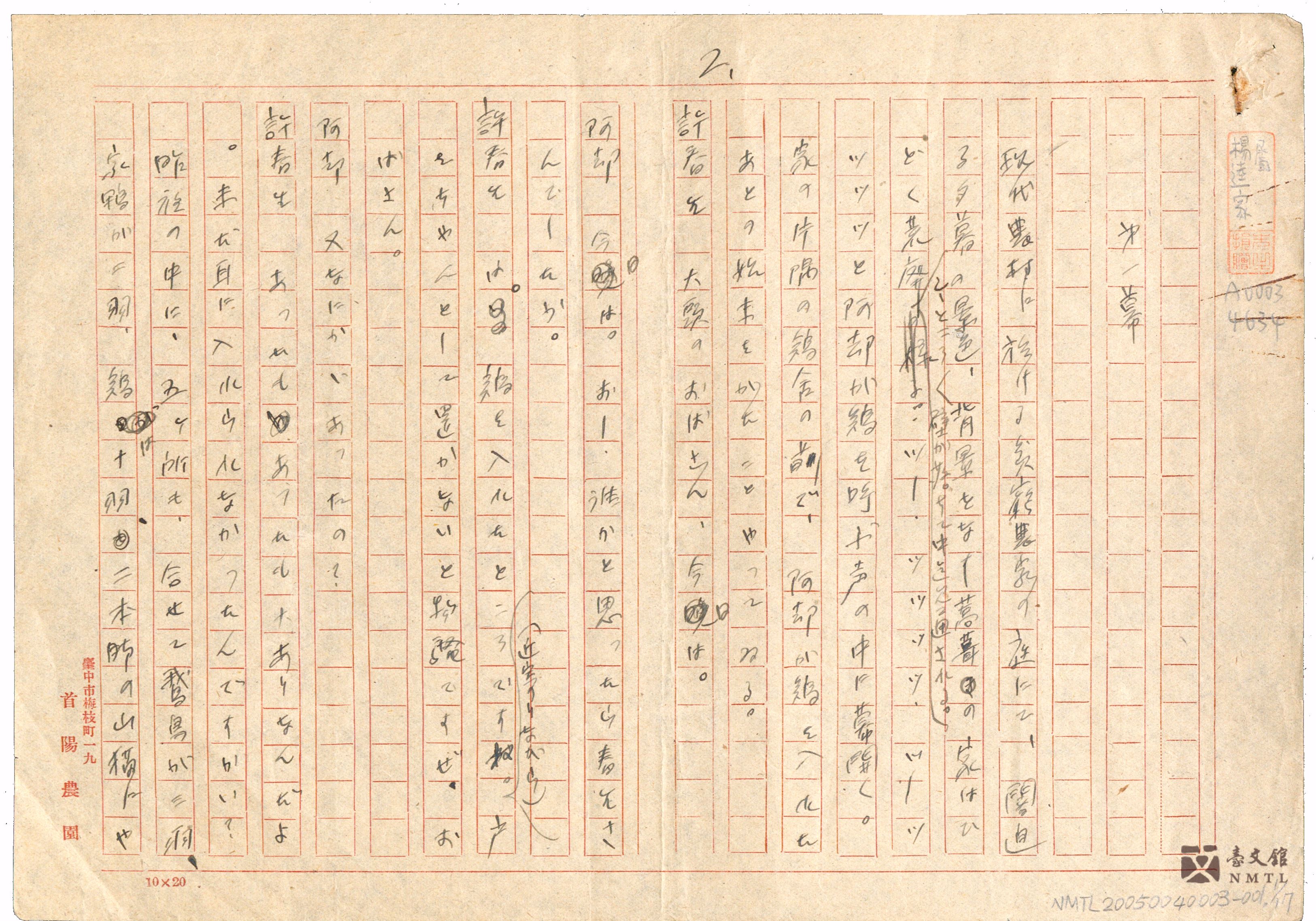
✺ "Eradicating Dengue Fever" (デング退治)
This is a screenplay written by Yang Kui (1906-1985) during the Japanese colonial period. It tells the tale of Lin Da-tou getting a high-interest loan from Li Tian-gou; unfortunately, he and his family suffered from dengue fever, making him unable to pay back his loan. In the end, the whole village worked together to clean the environment in the hope of eradicating dengue fever and eliminating fear for Li Tian-gou.(Donated by Yang Chien/ Kept in National Museum of Taiwan Literature)
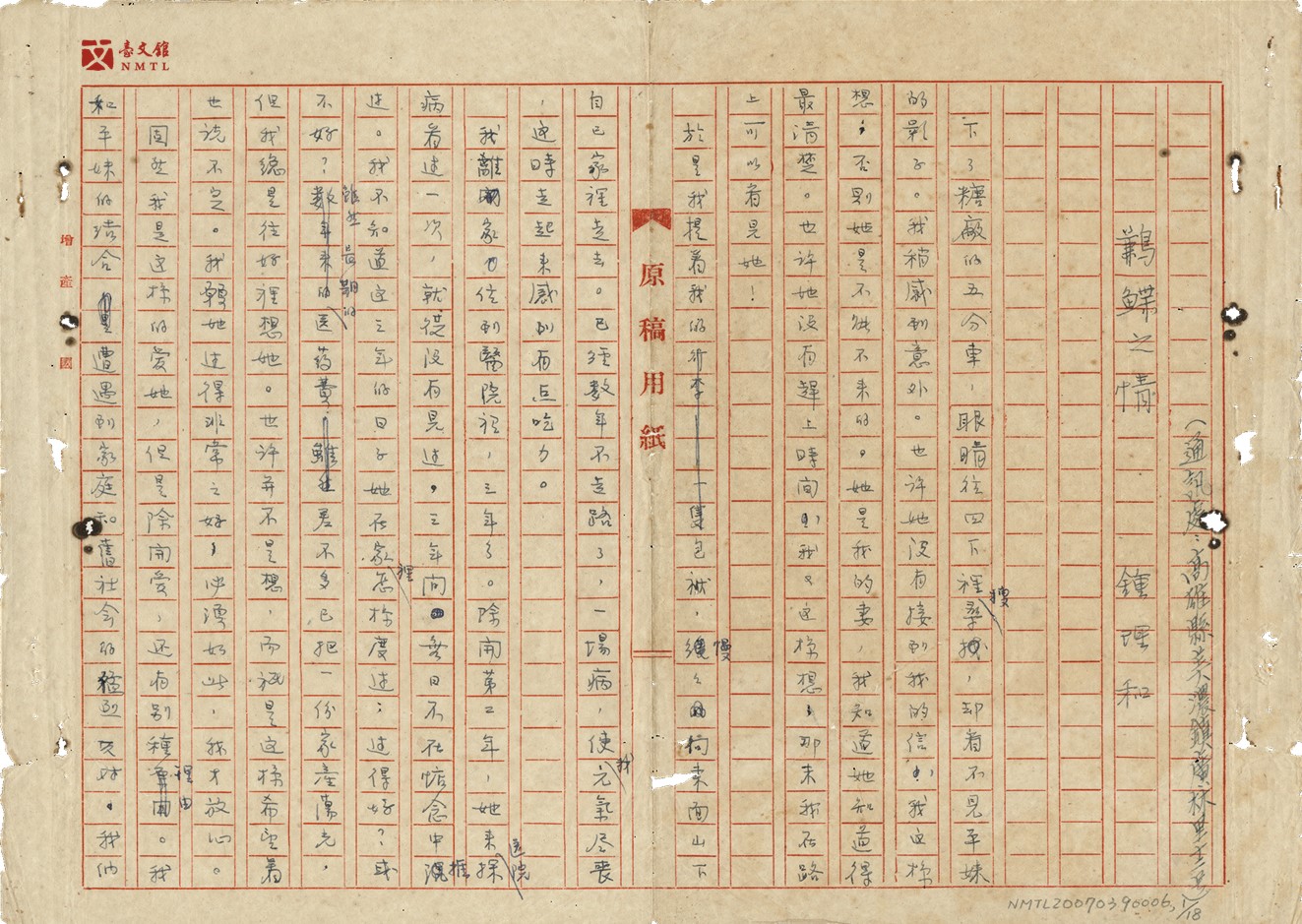
✺ "A Loving Couple" (redrafted version)
This is a short novel written by Chung Li-ho (1915-1960). The story illustrates the bond between a married couple and their hard work; after the protagonist falls sick, his wife works hard to make ends meet. The story also describes the undeniable relationship between sickness and poverty.(Donated by Chung Tie-min/ Kept in National Museum of Taiwan Literature)
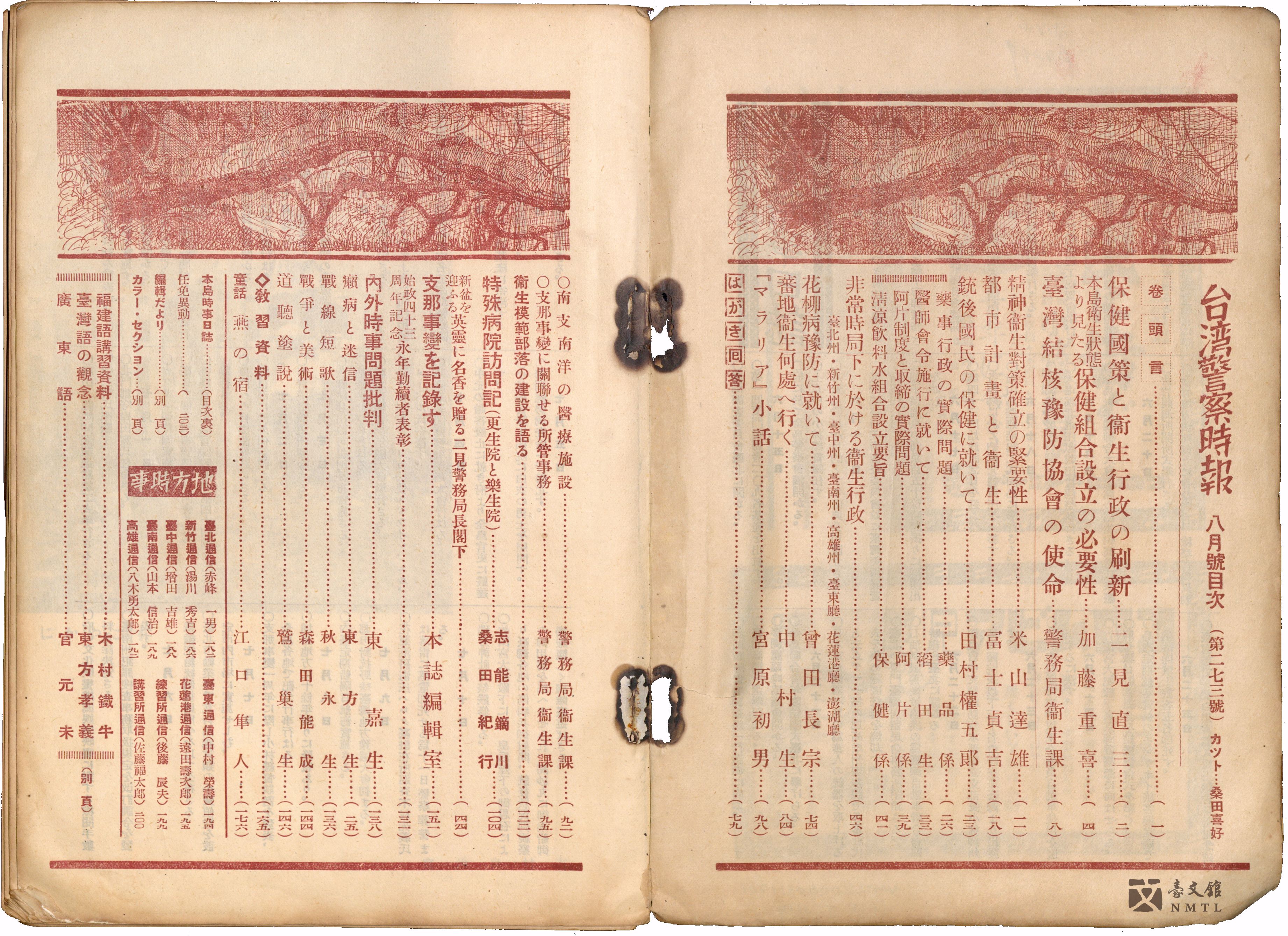
✺ August Issue, No. 273, TAIWAN POLICE DAILY: Hygiene
The publication depicts the health problems in Taiwan during the Japanese colonial era, e.g., Tuberculosis, Syphilis, Leprosy, etc. Also, attention was paid to opioid addiction. It shows the close relationship between the police and public health at that time.(Donated by Xu Bingding / Kept in National Museum of Taiwan Literature)
Quarantine - Shutting the World out or Me in?
In the 1930s, the Japanese government moved leprosy patients to the Lo-Sheng Sanatorium and restricted their freedom. Afterwards, treatment methods were found and public perceptions changed, so most people were no longer afraid of leprosy. However, new contagious diseases appeared, new fears emerged.
"People's fear of and discrimination against leprosy isolated these patents; their connections with the outside world were broken here."
Writer Weng Tai-sheng wrote down how the patients were forced to be isolated from society in his work IN THE WORLD OF LEPROSY SANATORIUM in 1980. The leprosy described in his work is the so-called "Hansen's Disease," which is a lowly contagious chronic disease caused by Mycobacterium leprae.
During the outbreak of Severe Acute Respiratory Syndrome (SARS) in 2003, Heping Branch of Taipei City Hospital was shut down and the medical staff were asked to return to the hospital to isolate themselves. At that time, panic spread. On January 21, 2020, the first confirmed case of Severe Pneumonia with Novel Pathogens (COVID-19 ) appeared in Taiwan. In the beginning of the pandemic, everyone coming from abroad had to stay in a quarantine hotel or stay home for a 14-day self-quarantine; this also applied to those having contact with the infected. In 2022, when the Omicron variant spread across Taiwan, self-quarantine after being tested positive or having contact with the infected became a common experience. Mandatory isolation was the authoritative exercise of public competence; it was also a way of life during the pandemic.
Literature depicts how people behave when society is in panic. It also captures the feeling of being rejected from the perspective of those that are infected. Isolating patients is a critical measure in modern public health system. However, it can still be a problem as physical isolation brings psychological isolation and compromises personal freedom, which is cherished in a democratic society.
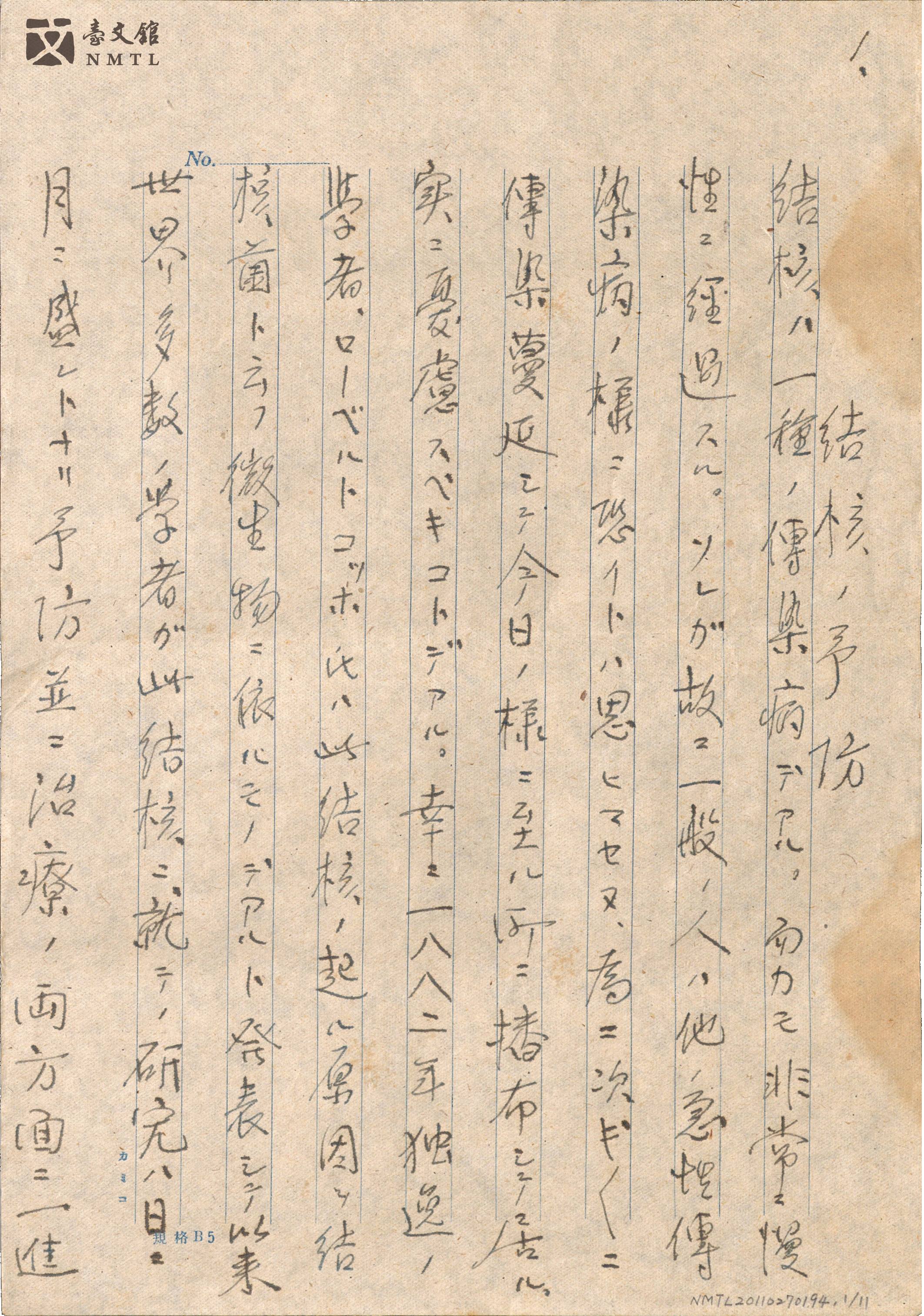
✺ "Prevention of Tuberculosis"
Chan Tso-chou (1897-1980) introduces several tuberculosis transmission routes and the prevention methods.(Donated by Chan Yuan-hsiung/ Kept in National Museum of Taiwan Literature)
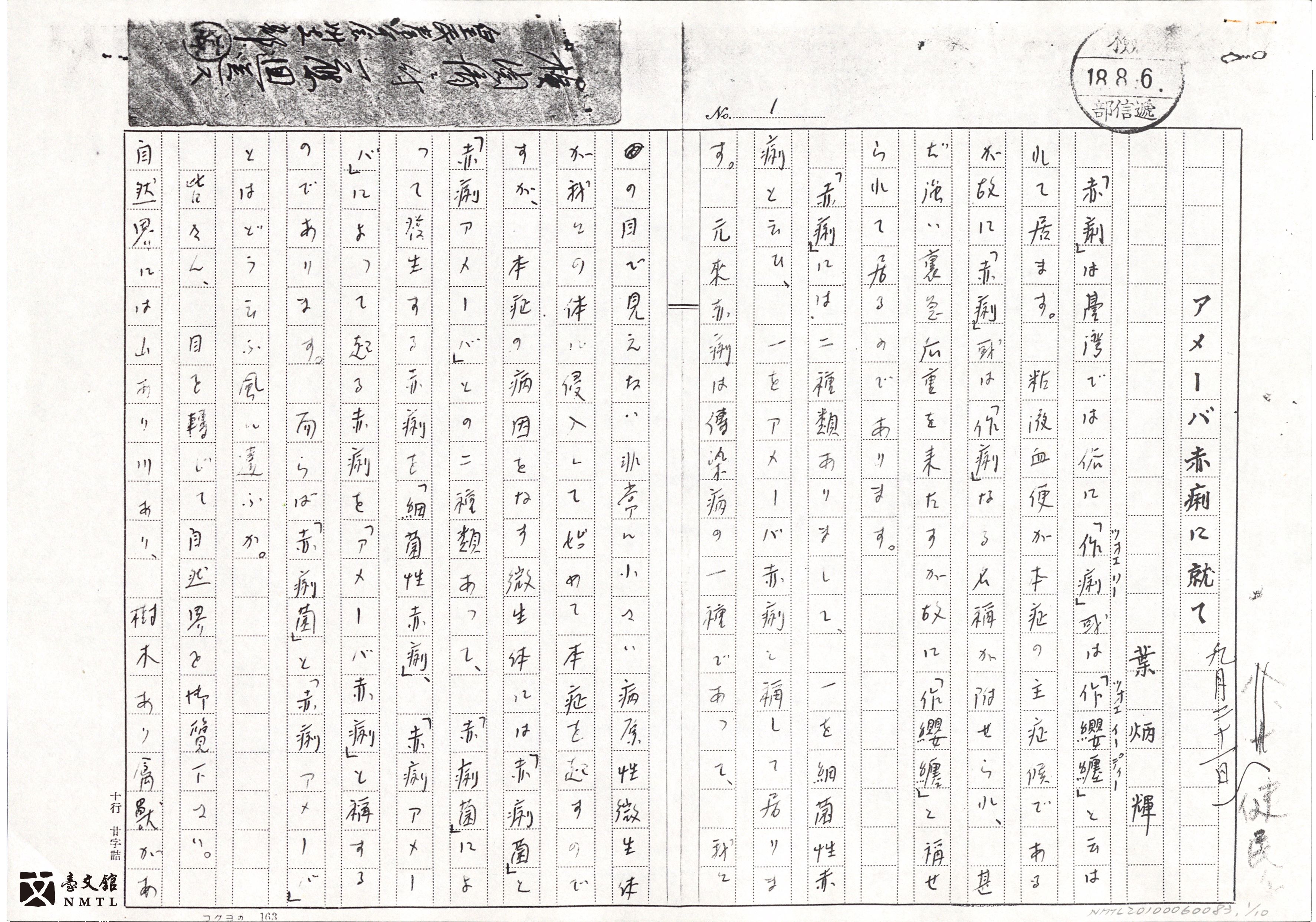
✺ "About Amoebiasis"〈アメ─バ赤痢に就て〉
This is a broadcast script on the control of "amoebiasis" written by Yeh Ping-hui (1907-1968). It explains the differences between bacteria and protozoa as well as treatment methods and preventive measures. It also mentions the new medicine developed by Tu Tsung-ming at the time.(Donated by Yeh Su-wan and Chou Yuan-lang/ Kept in National Museum of Taiwan Literature)
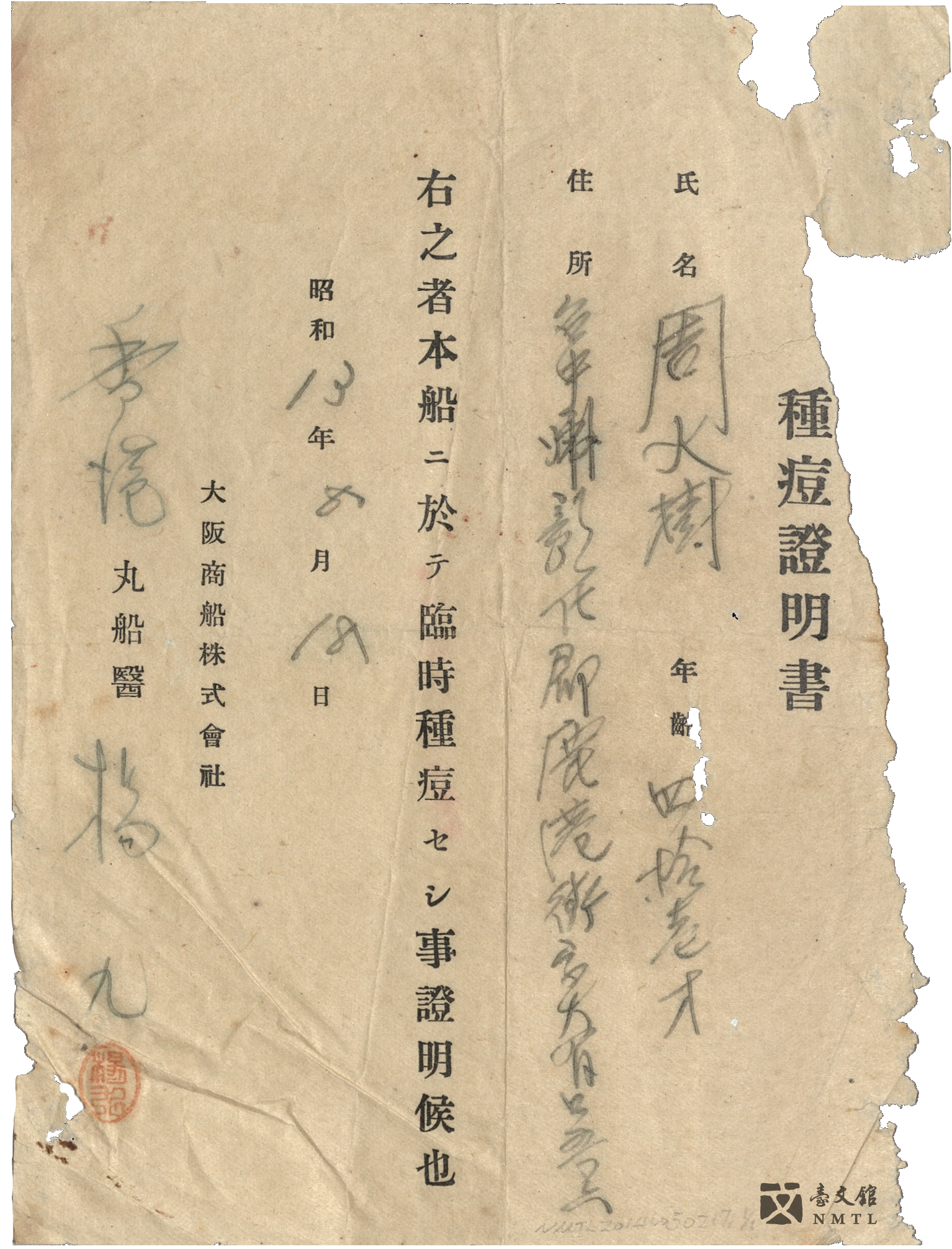
✺ Smallpox Vaccination Certificate of Chou Ting-shan
This is a vaccination certificate issued by Osaka Merchant Shipping Corporation. The date of issuance was August 18, 1938. At the time, to prevent smallpox from spreading, the Japanese government required those who travelled from China to Taiwan to bring a vaccination certificate or get vaccination from the ship's doctor when travelling by sea.(Donated by family members of Chou Ting-shan/ Kept in National Museum of Taiwan Literature)
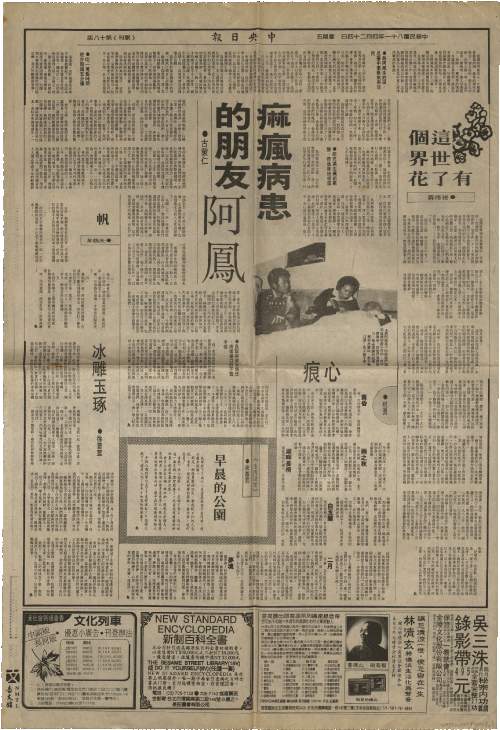
✺ "A Feng: Friend of A Leprosy Patient" CENTRAL DAILY NEWS
Ku Meng-jen (1951-) wrote down how Dao A-feng, an Atayal nurse, carefully took care of tuberculosis and leprosy patients during the time when the knowledge about infectious diseases was limited. Ku also aimed to educate the general public so that they did not have to face these diseases with fear.(Donated by Ku Meng-jen/ Kept in National Museum of Taiwan Literature)
✺ QUARANTINI
QUARANTINI is a short film trilogy produced by Public Television Service Foundation. Quarantini is the combination of Quarantine and Martini, which suggests the complicated emotions when drinking Martini during quarantine. The trilogy is composed of three films: THE SUN AND THE MOON, I'M IN QUARANTINE, and DIARY OF SHELTERING IN PLACE. These depict the "quarantine" life during the pandemic.(Provided by Taiwan Public Television Service and Kaohsiung Film Archive)
Communal Treatment – Dispelling Fear
Fear is the most genuine feeling we have when we are faced with diseases. However, it is also what we need the least.
"So, I will still soap you and bathe you. The foul smell outside the house is unbearable. However, at least we can get the refreshing air we want at home…… It is for cleansing, for the fragrance, for our memories."
In 1995, Chi Ta-wei released his short novel "Soap" in the LIBERTY TIMES SUPPLEMENT. The work describes the shock of the narrator when he finds out his partner is an HIV carrier.
The fear of diseases often results from a lack of understanding. The diseases that can be treated now were seen as punishment from God. In 1984, the first case of Acquired Immunodeficiency Syndrome (AIDS) appeared in Taiwan. AIDS patients' immune systems are weakened so many symptoms would appear. AIDS is caused by the Human Immunodeficiency Virus (HIV). However, an HIV carrier is not equivalent to an AIDS patient; a carrier can suppress the viral load by taking medication. AIDS has become a chronic disease due to the introduction of HIV medicines; yet it still carries a stigma.
Literature tears down the frightening appearance of disease and looks into the soft and fragile minds of patients. When new diseases are seen in newspapers or magazines, there would always be all sorts of gossip and rumor. When the cause of a disease is unknown, people are afraid and anxious. Through literature, we are able to gain more courage to face diseases and weather the storm together.
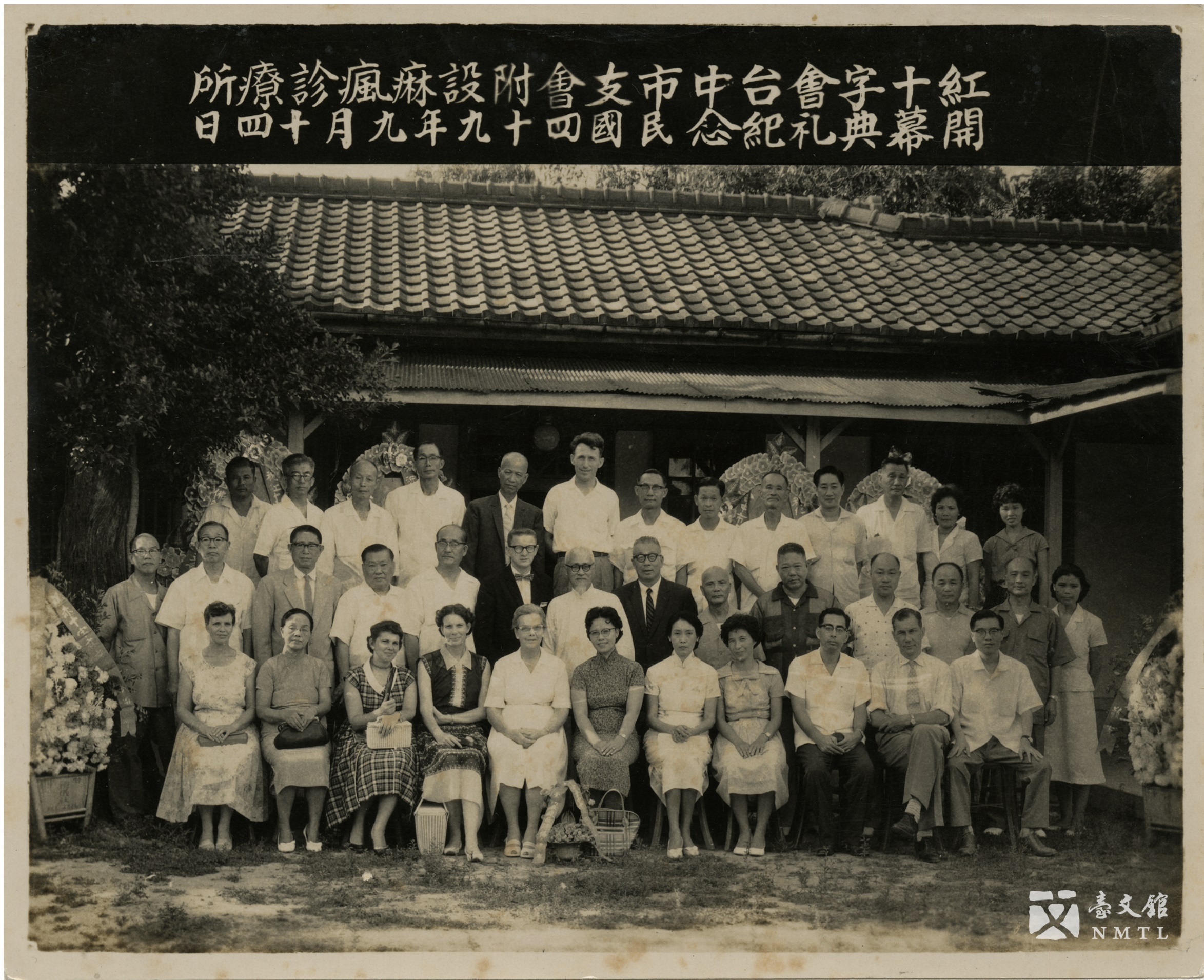
✺ Commemoration of Opening Ceremony of Leprosy Clinic, Red Cross Taichung Branch
Hansen's disease carried a terrible social stigma in the earlier days in Taiwan. At the time, foreign churches and Red Cross founded sanatoriums in Taiwan, aiming to convey the correct information about diseases to people while receiving patients.(Donated by Huang Chen-nan/ Kept in National Museum of Taiwan Literature)
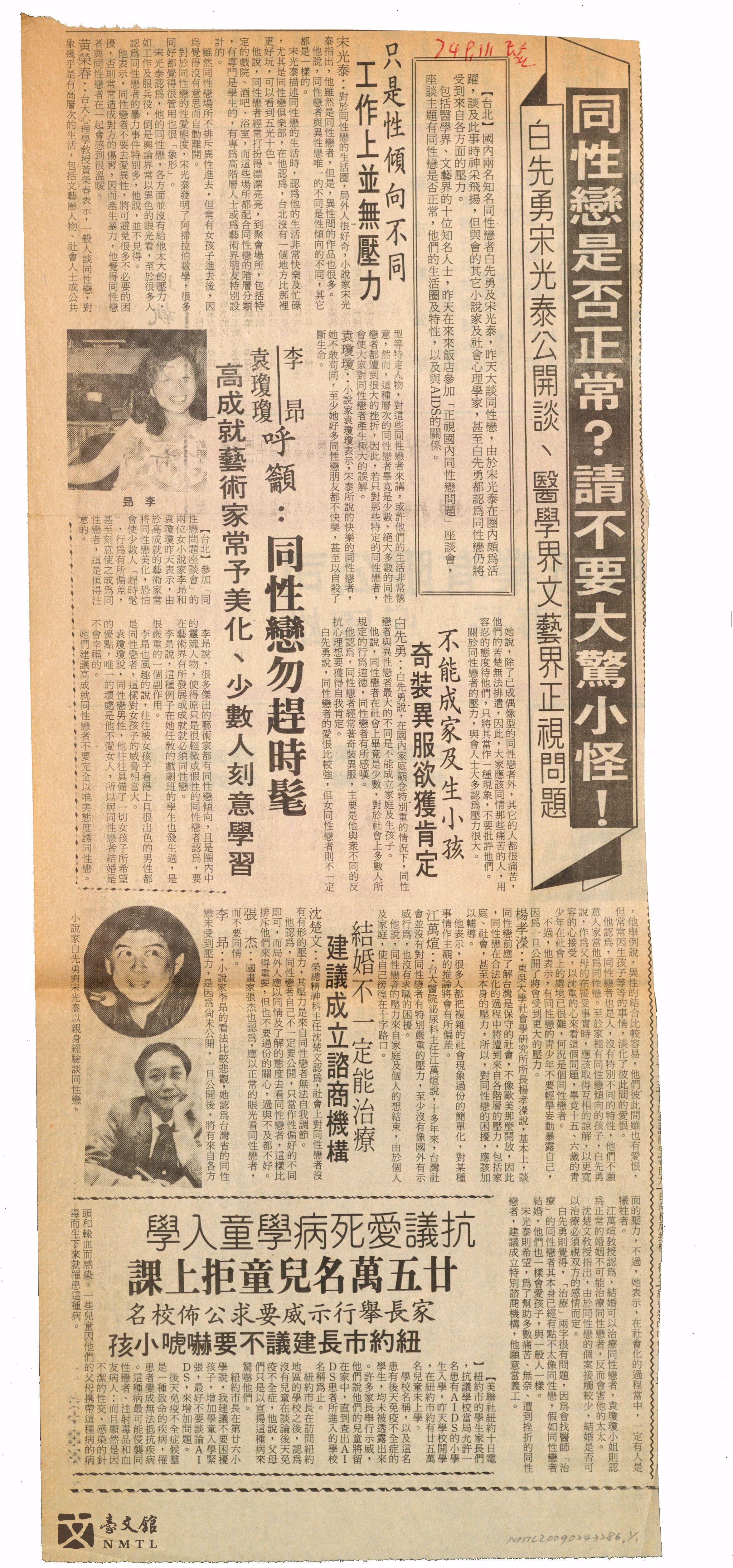
✺ "Is Homosexuality Normal? Please Do Not Overreact!" PEOPLE'S NEWS
This newspaper was published in 1985. It reports the symposium on "Addressing the Issue of Homosexuality in Taiwan," where many people from the medical field and literary world were invited to share their opinions. Among those, Pai Hsien-yung and Song Guang-tai spoke up for the LGBT community, imploring people to stop treating the LGBT community with bias.(Donated by Chiang Mu (Mu Yeh)/ Kept in National Museum of Taiwan Literature)

Stress - A Contagious Ailment?
Sexually transmitted diseases (STDs) are diseases transmitted through sexual contact, including gonorrhea, syphilis, genital warts, etc. STDs concern sex as well as illness. Therefore, STD patients are often described with negative adjectives such as "self-indulging" and "indiscreet." As these diseases are related to sex, it would likely lead to moral judgments. STDs also are a symbol of women's suffering and a metaphor for the oppression of patriarchy. In various literary writings, STDs are further used as a metaphor for the pain of the colonized.
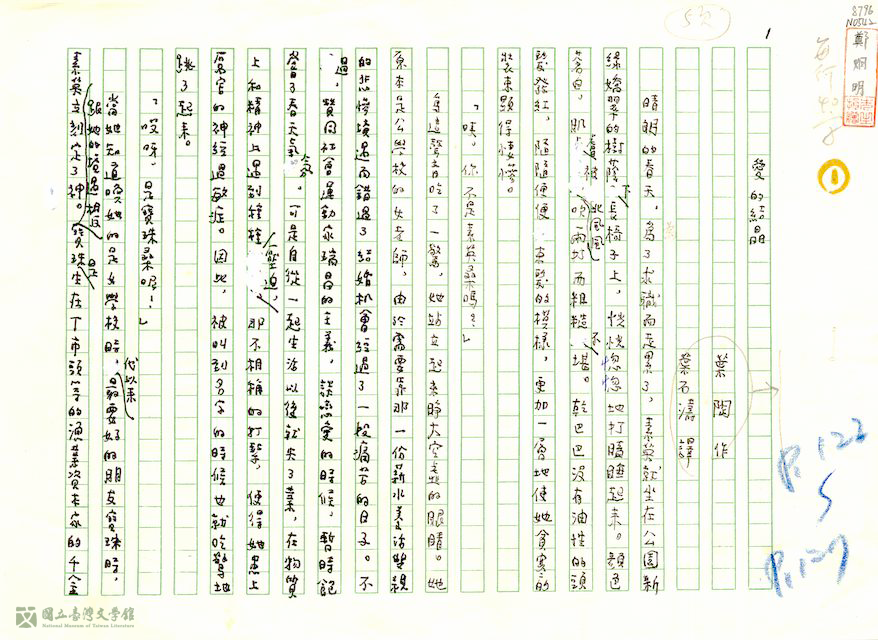
✺ "Crystal of Love," translated by Yeh Shih-tao
In this work by Yeh Tao (1905-1970), two women meeting in a park both poison their children due to their husbands' diseases. Suying's husband suffers from tuberculosis and they live in poverty. Baozhu, whose marriage is based on the benefits of her original family, gives birth to a handicapped child due to her husband's syphilis.(Donated by Literary Taiwan Magazine Publisher/ Kept in National Museum of Taiwan Literature)
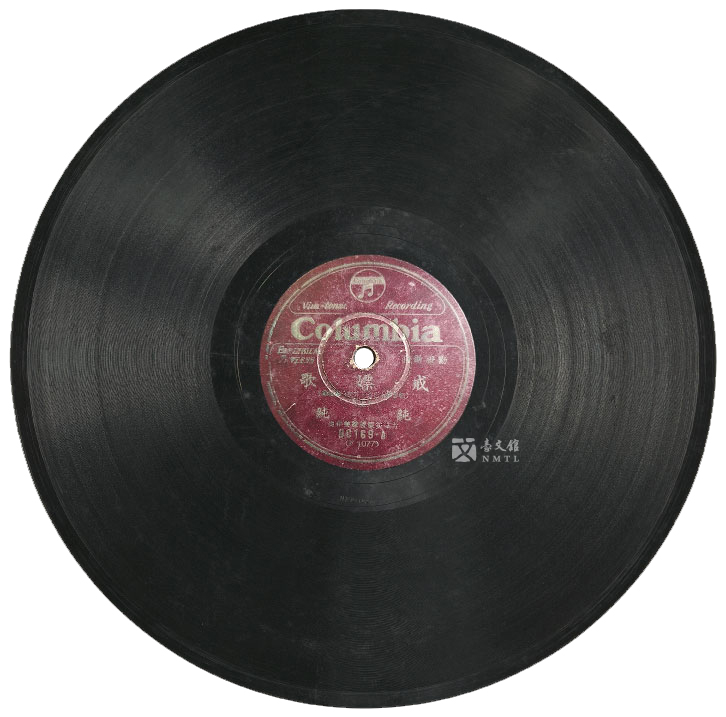
✺ SONG OF QUITTING GOING TO PROSTITUTES
SONG OF QUITTING GOING TO PROSTITUTES was written during the Japanese colonial era. The lyrics were written by Chang Yun Shan-jen, arranged by Ida Ichiro, and sung by Chun Chun. The song aims to persuade men to stop being obsessed with beautiful sex workers as they are only after clients' money, not to mention the risk of getting Syphilis or Gonorrhea.(Authorised and Provided by Song Record Culture Studio)
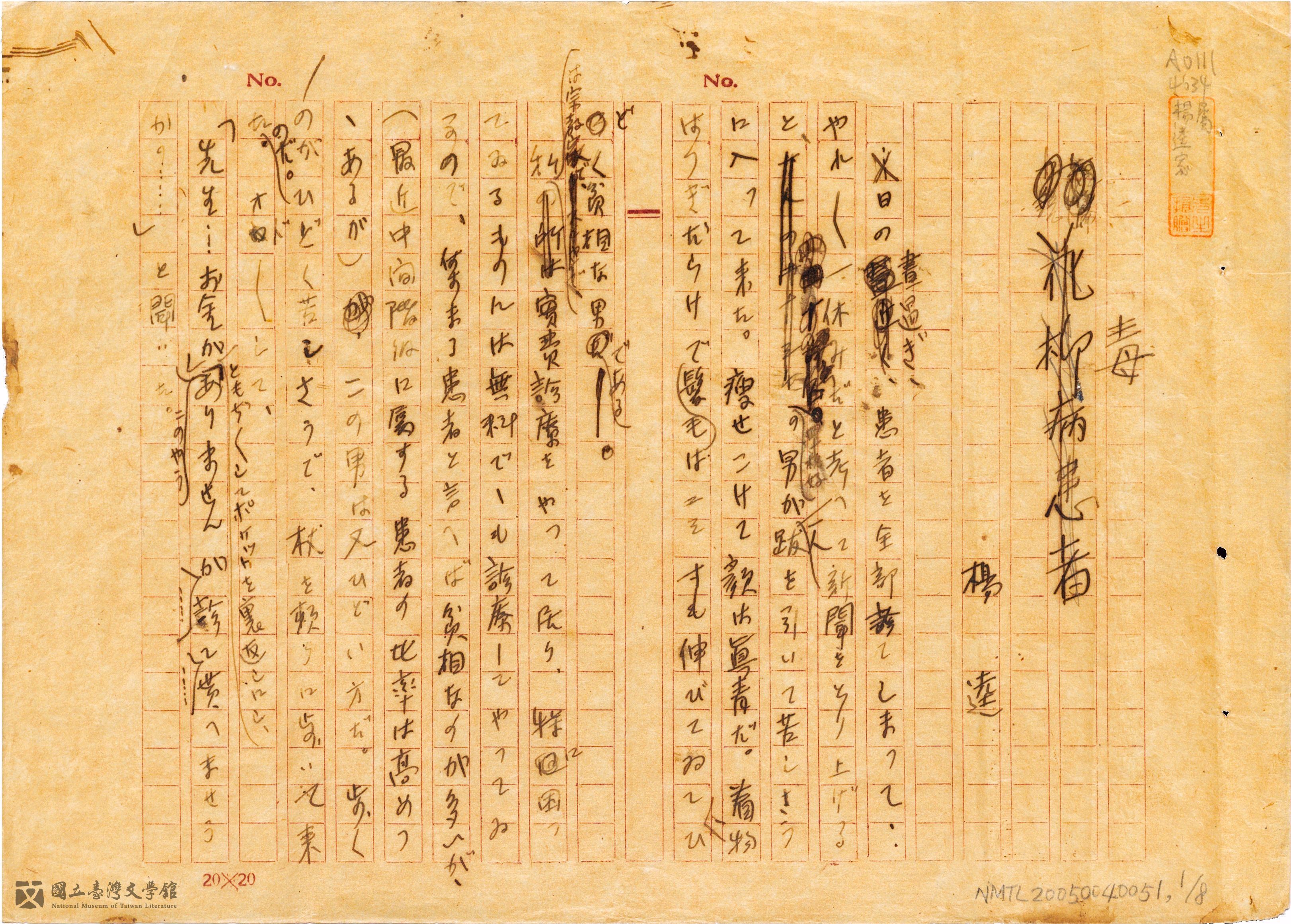
✺ "Poison"
In this work by Yang Kuei (1906-1985), a man with syphilis visits the doctor and asks for free treatment. The doctor originally scolds the man for being corrupted. However, after the doctor learns about the reason, he agrees to offer treatment for free and shows his resentment against the capitalistic society.(Donated by Yang Chien/ Kept in National Museum of Taiwan Literature)

